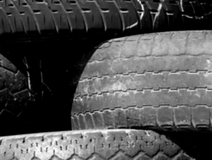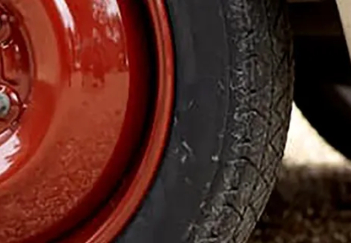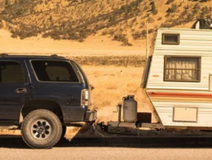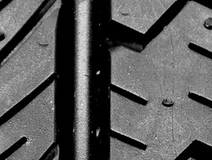
September 05, 2022
Is Tyre Retreading Safe?
Tyres are an essential part of vehicle performance and ride safety. In our daily drives, we rely on these rubber wonders to transport our passengers and goods in the ways we most prefer—stably, securely, and comfortably.
Excellent road habits and regular maintenance prolong the life of our tyres. But eventual wear and tear is inevitable, which leads vehicle owners to this dilemma: should they buy new tyres or try retreading tyres?

What is Tread?
Before we discuss retreading, it's essential to understand what the tread is. Simply put, the tread is the rubber that covers your tyre and makes contact with the road.
The tread is also important because it has features that match your vehicle's performance. These may include:
• Blocks or raised rubber squares that give you traction, letting you move across surfaces. These also make your vehicle stable when making sharp turns and give you a quiet ride on dry surfaces.
• Voids or the sections in between the blocks that drain water and prevent hydroplaning.
• Other elements that enhance braking ability, acceleration, and fuel economy.
Also read: 8 Ways You Can Save on Gas With the Right Tyres
💡Pro-Tip New tyres have a tread depth of 8 to 9 millimetres, which wears down with regular use. In Australia, it's against the law to drive on tyres with a tread depth lower than 1.6 millimetres. So, regularly checking your tyres and buying new ones when needed is always a good idea.
Also read: How to Make Sure Your Tyre's Tread Depth Is NOT Illegal
What is Tyre Retreading?
But instead of buying new tyres, you can choose to retread or resole your old ones. This process involves removing your tyre's old casing and replacing it with a new tread and sidewall rubber. The retreaded tyre undergoes a curing method to vulcanise or harden the rubber, which lets it adhere to the original carcass. The retreading process is also called tyre remoulding.
Take Note: Before searching "Retreaded Tyres Near Me" online, remember that you can't just retread any old tyre. For the tyre to qualify, it must have:
✅ A strong carcass.
You can't reuse a tyre with structural damage because it poses safety risks.
✅ Enough rubber left for safe driving.
Tread depth should match the base carcass, which should have a minimum depth of 2 to 3 millimetres. A thicker carcass is ideal because you can add a deeper tread, which prolongs tyre life and ensures your safety.
✅ A tread pattern that closely matches its original one.
Tyres have different tread patterns for vehicle types—passenger cars, all-terrain SUVs, and light trucks. So, make sure your retreaded tyres have a pattern compatible with your vehicle.
Also read: Your Complete Guide to Different Tyre Types
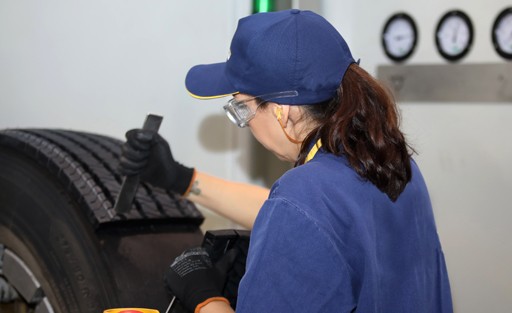
Is Retreading Safe?
In the past, people automatically blamed retreaded tyres for the peeled-off rubber debris littering the roads. But retreading has come a long way, thanks to new technology. Research has shown that poor maintenance of tyres—whether brand new or retreaded—is the primary cause of tyre damage. Aside from improper inflation, other reasons for premature wear are bad driving habits, incorrect wheel alignment, faulty suspension, tyre mismatch and many others.
Also read: Top 8 Causes of A Flat Tyre
Take Note: Retreaded tyres have become a safe option because:
✅ They are used by vehicles that offer passenger safety, such as buses and aircraft. Nearly all major airlines use retreaded tyres.
✅ Top tyre manufacturers such as Michelin, Goodyear, Yokohama and Dunlop have retreaded tyres for sale, which go through rigorous safety tests.
✅ Reputable fitters include retreading in their services, which adhere to strict quality standards and efficient processes.
✅ Tyre technology has grown, producing more robust carcasses and high-quality rubber.
✅ They're legal! Retreaded tyres need to include the speed limit and retreader's name.
When Do You Use Retreaded Tyres?
Retreaded tyres offer benefits in specific applications. To help you make an informed decision, Tyroola walks you through their pros and cons.
Why Retread Your Tyres?
• Save on cost.
You can retread tyres several times, saving as much as 40% compared to buying new tyres. If you run a fleet of hard-working vehicles, the affordable price of retreaded tyres is a strong selling point.
• Lessen your carbon footprint.
According to the Business Recycling directory, Australians use up about 48 million tyres a year. About 65% of these are stored, illegally disposed of or dumped in landfills. Retreaded tyres lessen waste, carbon emissions, and the use of oils in the tyre manufacturing process.
• Use them for heavy-duty vehicles.
Retreaded tyres are best for heavy vehicles such as commercial trucks, buses, military vehicles and others, which regularly carry and tow heavy loads. Because tyre damage and changes are typical in such cases, using retreaded tyres makes good sense.
💡Pro-Tip Retreaded tyres for passenger vehicles must have at least a speed rating of 140 kilometres per hour. Their original carcass must have had a minimum speed rating of 180 kilometres per hour.
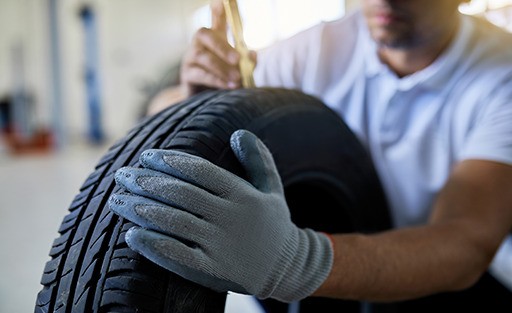
However, Think TWICE about Using Retreaded Tyres Because:
• You're driving a passenger car.
Passenger car tyres typically have a leaner construction than those of heavy-duty vehicles. Because of their thinner carcass, experts do not recommend retreading them, which may result in high-speed instability, shortened tyre life, and less grip and braking performance.
• New budget tyres are competitively priced.
New tyres come in all price ranges, from premium to budget. Reputable and world-class brands now produce affordable tyres that display impressive performance for all vehicles. With this development, buying brand-new tyres may still be economical.
• New tyres are still the safest option.
Even with cutting-edge technology, fresh tyres still have the upper hand in reliability, safety, and performance. Retreaded tyres have old structural elements such as cords and steel belts. With new tyres, you are sure of their quality, with all their parts functioning optimally.
Also read: Are Second-Hand Tyres Worth It?
Caring for Your Tyres
Retreaded or not, tyres need to be maintained to boost their performance and your safety. Here are some ways to do this:
• Consult your owner's manual for specifications such as recommended tyre pressure, speed rating, and load index.
• Always check tyres before going on a trip.
• Regularly check tyres for damage such as punctures and misalignment.
• Replace damaged tyres right away.
• Conduct regular tyre rotation, wheel alignment, and balancing.
• Buy tyres from a reputable supplier like Tyroola.
• Let a professional install and repair your tyres.
Also read: Tyroola's Guide to Cleaning Your Tyres in Five Easy Steps
Buy New and Affordable Tyres
Remember that tyres absorb most of your ride's impact, so make sure that they are always at their optimum. Tyroola offers only brand-new and all-original tyres from credible brands. Thanks to our Price Match Guarantee, you can buy tyres for your 4x4, SUV, passenger car, light truck, and commercial vehicle at the cheapest prices online. Enjoy significant savings with our daily deals and discounts.
Thanks to our Price Match Guarantee, you can buy tyres for your 4x4, SUV, passenger car, light truck, and commercial vehicle at the cheapest prices online. Enjoy significant savings with our daily deals and discounts.
Need more wheel wisdom and tyre trivia? Explore our blog and guides.
